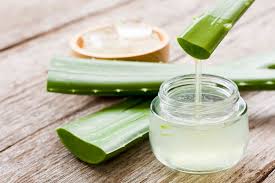For Aloe Vera extract project, here’s an outline you can follow

For Aloe Vera extract project, here’s an outline you can follow:
Explanation of Why This Herb Was Chosen
Aloe vera was chosen for its well-known therapeutic properties and wide range of uses, particularly in skin care and healing. The herb has a long history in traditional medicine for its soothing, moisturizing, and anti-inflammatory effects, making it a versatile and accessible option for creating an herbal preparation. Aloe vera is also known for its ease of cultivation, making it a great choice for hands-on herbal projects.
Complete Description of Procedure Used to Make the Preparation
Materials Needed:
- Fresh aloe vera leaf
- Knife
- Spoon or scraper
- Glass jar
- Distilled water or carrier oil (optional, depending on preparation type)
Steps:
- Harvest Aloe Vera Leaf: Choose a mature, thick aloe vera leaf from the plant.
- Clean the Leaf: Wash the leaf thoroughly to remove any dirt.
- Extract Aloe Gel: Cut off the thorny edges of the leaf, then slice the leaf lengthwise. Use a spoon or scraper to collect the gel from inside the leaf.
- Prepare the Extract: If making a tincture, you can blend the gel with alcohol (e.g., vodka) in a 1:2 ratio. For a salve, mix the gel with a carrier oil like coconut or olive oil and heat gently to combine. You may also choose to make a simple fresh gel or conserve by mixing with a preservative like honey.
Aroma, Texture, and Visual Appearance of Aloe Vera
- Aroma: Aloe vera has a very mild, neutral scent, with a subtle earthy and fresh note.
- Texture: The gel is slimy and smooth, easily spreadable. It is thick and viscous, but not sticky.
- Visual Appearance: Aloe vera gel is transparent to slightly translucent with a pale green hue.
Monograph of Aloe Vera
Photo of Aloe Vera
(Include a high-quality image of the plant or a close-up of the gel)
Historic/Folkloric Use
Aloe vera has been used for thousands of years in various cultures, especially in Ancient Egypt, where it was regarded as the “plant of immortality.” It was traditionally used for soothing burns, promoting wound healing, and moisturizing dry skin. In Ayurvedic medicine, aloe vera is also used for digestive health and detoxification.
Usual Dosing Instructions
- For topical use, aloe vera gel can be applied directly to the skin as needed for soothing or healing purposes.
- For internal use (with caution), aloe vera juice is typically consumed in small quantities, around 1-2 ounces per day, but it is important to consult with a healthcare provider before ingesting.
- For external use in cosmetic preparations, a 1:1 dilution with a carrier oil is commonly recommended for sensitive skin.
Cautions
- Aloe vera gel is generally safe for external use but can cause skin irritation in some people. It should be patch-tested before widespread application.
- Internal use of aloe vera is controversial and should be approached with caution. Overuse can lead to diarrhea or abdominal discomfort.
- Aloe vera may interact with certain medications, including diabetes medication (due to its blood sugar-lowering effects), diuretics, and laxatives.
References
- “Aloe Vera: A Review of Toxicity and Adverse Clinical Effects” (PubMed)
- The Herbal Medicine-Maker’s Handbook by James Green



